‘Behind closed doors’: the new normal in sport
Virus or no virus, some things never change. Like the music. No one in the stands but that doesn’t stop the PA from blasting it out at a volume that rattles the floodlights and wakes the ghosts of seasons past. No matter the stadium, the sounds are largely the same and entirely predictable -- the famous hymn of the Champions League at all European matches, or the Cant del Barça at the Camp Nou while Van Halen’s “Jump“ is a popular universal favourite.
In my part of the world, the north-west of France, “Something Just Like This” by The Chainsmokers and Coldplay has forced itself off the subs’ bench and into the starting line-up while Jain’s “Oh Man” has become a firm fan favourite, or at least it would have done had there been any fans.
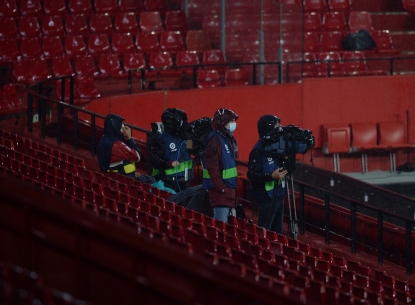 Sevilla meet Real Valladolid at an empty Ramon Sanchez-Pizjuan Stadium on December 19, 2020
(AFP / Cristina Quicler)
Sevilla meet Real Valladolid at an empty Ramon Sanchez-Pizjuan Stadium on December 19, 2020
(AFP / Cristina Quicler)On the pitch, the players finish their warm-up, then return to the changing room for final preparations before marching out for kick-off. No young mascots to accompany them, of course, and no handshakes with the opposition. The players slide swiftly into their starting positions, the referee’s whistle echoes around the terraces for kick-off... and a deathly silence envelops the stadium.
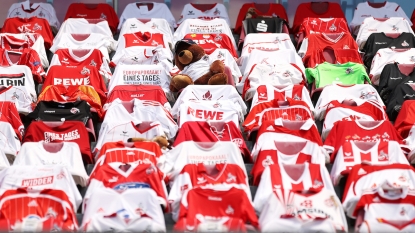 Cologne, Germany, May 17, 2020 (AFP / Lars Baron)
Cologne, Germany, May 17, 2020 (AFP / Lars Baron)Since June, the scene has been repeating itself across Europe, from Rome to Berlin, from the Champions League final stages in Lisbon to the big games in the Premier League. For ‘sold-out’ read ‘behind closed doors’.
In French stadiums, there was a vague pulse until the end of October when the government imposed a new ban on fans attending matches. Prior to that, a limit of 5,000 had maintained a bit of atmosphere while a reduction to 1,000 still allowed for signs of life. Behind closed doors is another beast altogether.
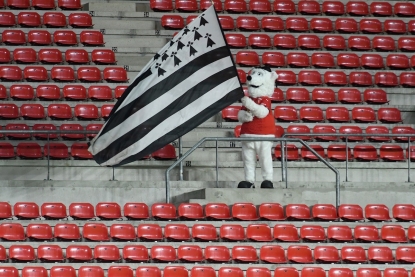 A lonely mascot at the Ligue 1 match between Rennes and Brest at Roazhon Park, Rennes on October 31, 2020 (AFP / Jean-Francois Monier)
A lonely mascot at the Ligue 1 match between Rennes and Brest at Roazhon Park, Rennes on October 31, 2020 (AFP / Jean-Francois Monier)This really hit home during a Ligue 1 match between Rennes and Brest at the end of October -- a Breton derby, normally so vibrant, filled with colour, smell and noise, lying silent by the road. No aroma of grilled sausage or sizzling pancake in front of the stadium nor the incessant wail of the ‘binious’ - the local bagpipes. Not even a refrain of the Breton anthem "Bro gozh ma zadou" ("Old country of my ancestors") before the players emerge on to the green sward. It was sad.
And it was no better the following day when Angers hosted Nice in the drizzle, in the shadow of construction cranes that tower over the main stand of another empty, soulless stadium.


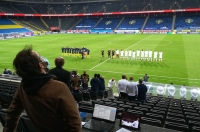
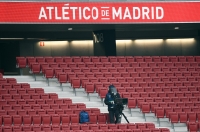

In Angers, as in a handful of other Ligue 1 stadiums, the club subsequently tried to break the silence with fan reaction sound effects. The supporters have become a consistent soundtrack with variations in intensity completely disconnected from what is happening on the pitch.
Handball and basketball clubs in France have also maintained their musical output but have added a speaker – it would be unfair to use the word ‘commentator’ - chipping in with remarks about the game and chanting all alone “Defence, defence!". The purpose of this, never mind the effect it has on the players, remains unclear.
 Aymeric Laporte (Manchester City) and Luka Jovic (Real Madrid) clash in the Champions League last eight in Manchester, August 7, 2020 (AFP / Dave Thompson)
Aymeric Laporte (Manchester City) and Luka Jovic (Real Madrid) clash in the Champions League last eight in Manchester, August 7, 2020 (AFP / Dave Thompson)And from a purely selfish journalistic point of view, this is where the real problem lies. As match reports must be sent within a quarter of an hour of the final whistle, we spend much of the second half with our noses buried in the keyboard, relying on the growl and hum, the‘ooohs’ and ‘aaahs’ of the crowd to alert us to action on the field. Journalists miss the crowds as much as the players do.
Fortunately, we still have live radio at the grounds and the commentators have done a great job filling the breach. Their words now resonate clearly through the press stands and we never miss a thing.
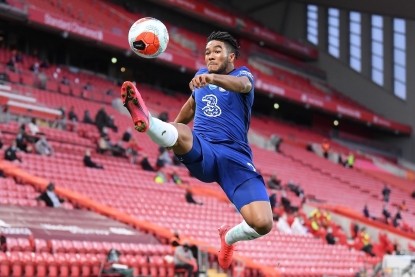 Chelsea’s Reece James against Liverpool, July 22, 2020 (AFP / Laurence Griffiths)
Chelsea’s Reece James against Liverpool, July 22, 2020 (AFP / Laurence Griffiths)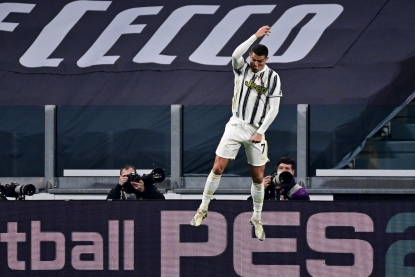 Cristiano Ronaldo (Juventus) celebrates a goal, November 21, 2020 (AFP / Miguel Medina)
Cristiano Ronaldo (Juventus) celebrates a goal, November 21, 2020 (AFP / Miguel Medina)On the other hand, health measures got the better of the communal buffets and much of the camaraderie in the press rooms. Those moment before a match when colleagues from different parts of the country might gather and trade snippets of information that may have gone unnoticed, are gone. Now everyone has their allocated space, safely distanced, at which they can have a small individual snack, and maybe, if they fancy some banter, shout across to colleagues. Hardly ideal for an intimate fact-finding mission.
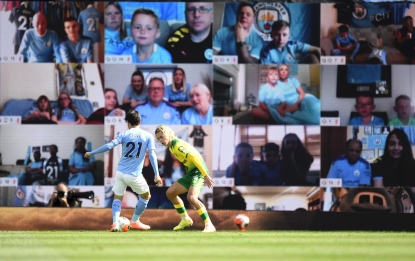 David Silva (Manchester City) and Todd Cantwell (Norwich City) play in front of a screen of supporters in Manchester, July 26, 2020 (AFP / Peter Powell)
David Silva (Manchester City) and Todd Cantwell (Norwich City) play in front of a screen of supporters in Manchester, July 26, 2020 (AFP / Peter Powell)That said, there have been benefits. Apart from in stadiums where the press box is very high up, the silence now allows us to hear the voices on the pitch. Cries of pain, of rage, encouragement, insults, instructions…there is no hiding place now for the players who like to talk. Antoine Maignan, an AFP football writer in Paris, saw France goalkeeper Hugo Lloris in a new light during an international match in Sweden in September.
“We immediately understand much better why he wears the captain's armband,” says Antoine. “He is constantly moving people around, correcting, encouraging, motivating. ‘Get out, get out!’ or 'Adri, closer!’ to Adrien Rabiot.” In this sense, being behind closed doors has actually opened a new door for us.
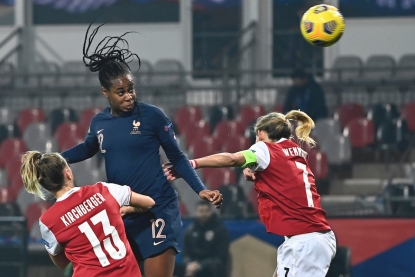 Marie-Antoinette Katoto during the France v Austria match at Guingamp, Novembre 27, 2020 (AFP / Damien Meyer) (AFP / Damien Meyer)
Marie-Antoinette Katoto during the France v Austria match at Guingamp, Novembre 27, 2020 (AFP / Damien Meyer) (AFP / Damien Meyer) France v Austria match at Guingamp, Novembre 27, 2020 (AFP / Damien Meyer)
France v Austria match at Guingamp, Novembre 27, 2020 (AFP / Damien Meyer)Without the empty stands, there is a good chance that the racism row that erupted during the Champions League match between Paris Saint-Germain and Basaksehir on December 8 might have slipped under the radar.
From the press box, no one heard Romanian fourth official Sebastian Coltescu say "negru", the Romanian word for "black", when referring to the Turkish club’s assistant coach Pierre Achille Webo.
But in a packed stadium, that might have escaped the Istanbul bench as well, in the same way that previous episodes of racism have often been difficult to distinguish without close study of television and audio footage.
 Empty stands allowed journalists to listen in to the pitchside racism row during the Paris Saint-Germain -Basaksehir Champions League match on December 8, 2020. (AFP / Franck Fife)
Empty stands allowed journalists to listen in to the pitchside racism row during the Paris Saint-Germain -Basaksehir Champions League match on December 8, 2020. (AFP / Franck Fife)On the other hand, Alexis Hontang and Adrien Vicente, who covered the match for AFP, did not miss the lightning reaction of the management and the players, notably Basaksehir's Senegalese forward Demba Ba. "When you mention a white guy, you never say 'this white guy', you just say 'this guy', so why when you mention a black guy do you say 'this black guy?'" Bae said clearly enough for the journalists in the stand to hear.
Stuck in their press gallery without even video feedback, they then had to strain their ears to listen to the nearby TV commentators, who had access to the images and sound from the edge of the field. There followed two hours of confusion, faced with an empty field and deafening silence after the players had walked off, before the match was officially postponed.
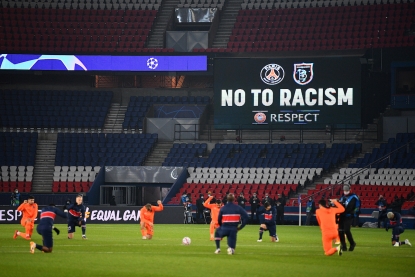 The ’walk-off’ match between Paris Saint-Germain and Istanbul Basaksehir restarts at Parc des Princes on December 9, 2020 (AFP / Franck Fife)
The ’walk-off’ match between Paris Saint-Germain and Istanbul Basaksehir restarts at Parc des Princes on December 9, 2020 (AFP / Franck Fife)When the players are not on the pitch, access to all information has become even more difficult. ‘Behind closed doors’ has become the rule for weekday training and the mixed zone where journalists attempt to squeeze a line or two of post-match illumination out of reluctant players before they leave the stadium has disappeared. In the best-case scenario, reporters are confined to the press conference room waiting to see who the teams will put up to talk and when they will deign to do so.
Often, too, we find ourselves stuck in the press box trying to ask our questions to a coach or player connected to Zoom from the bowels of the stadium, or who is talking to us on the phone via a WhatsApp group while pacing around just some 15 metres in front of us. In the worst case, we are only entitled to a YouTube video where we see the coaches and players answering our questions read by the staff.
New York office reporter Peter Hutchison discovered this mix of intimacy and distance while covering the US Open tennis tournament in early September. In the absence of the 23,000 seething New York spectators, reporters could hear Serena Williams’s breath on the court and didn't have to elbow their way in to catch a glimpse of the players in practice. “We felt like we were at a private, intimate exhibition of the best tennis players in the world,” he says. However, it was impossible to approach them as all of the press conferences or interviews took place on Zoom.
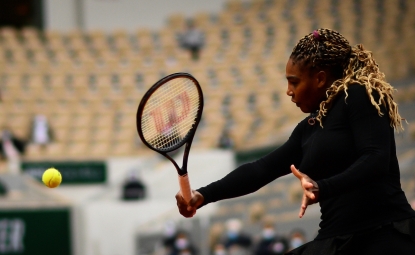 (AFP / Martin Bureau)
(AFP / Martin Bureau)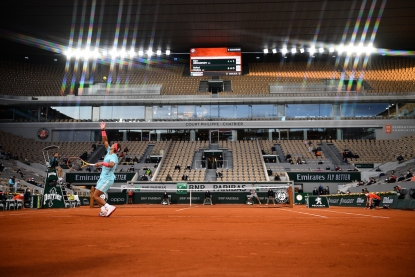 Rafael Nadal, at Roland Garros, Septembre 28, 2020 (AFP / Martin Bureau)
Rafael Nadal, at Roland Garros, Septembre 28, 2020 (AFP / Martin Bureau)These videoconference interviews also changed the game for Jean-Louis Doublet, covering motorsport. Jack Miller, the affable, amusing and talkative Australian MotoGP rider, comes across a bit flatter on video, while his French colleague Johann Zarco, who is rather shy in the flesh, is much more comfortable on screen.
Above all, health measures have locked journalists in a bubble that moves from Grand Prix to Grand Prix, without ever having direct contact with the teams.
"You used to stop by for a coffee with someone or other, you would pass the drivers behind their trucks... Now, it's all by video, whether you're 1,500 km away or in the next room,” Jean-Louis said.
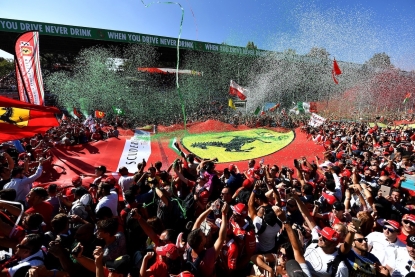 The Italian public celebrate with Ferrari at Monza, Septembre 23, 2017 (AFP / Andrej Isakovic)
The Italian public celebrate with Ferrari at Monza, Septembre 23, 2017 (AFP / Andrej Isakovic)“And without an audience, we travel thousands of kilometres always to see the same Grand Prix. Each time we find the same people, the same trucks.
“The Italian, Mexican and German audiences react in different ways and this is what gives each circuit its individuality and character. The Le Mans 24 Hours without chips, sausages and concerts is no longer Le Mans. Monza without the Italian crowd is just a mass of concrete in a dark forest, like a mausoleum.”
Story by Fanny Carrier with journalists from the sports department. Edited by: Michaëla Cancela-Kieffer in Paris.
English version: Barney Spender


